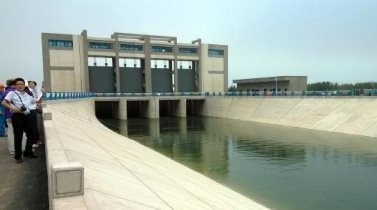The south-to-north water diversion project in Beijing has helped slow down the decline of underground water level, according to the municipal water authority.
The Xinhua News Agency reported that from Dec. 27 last year until Thursday, Dec. 3, a total of 812 million cubic meters of water from the water diversion project has been delivered to Beijing and the figure is expected to reach 880 million by the end of this year.
The municipal water authority said that as of November, Beijing had used up 95 million cubic meters less underground water year on year.
The agency said that underground water level in October this year was 0.33 meter lower than the previous year. In Oct. 2014, the water level was 1.15 meters, also lower than the year previous to that.
According to the report, the water diversion project was initially designed to take water from the Yangtze, China's longest river, through eastern, middle and western routes to supply water to dry areas in the north. But now it provides 70 percent of Beijing's water supply.
More than 10 million residents benefit from the water diversion project as it reaches downtown areas and suburban districts including Daxing and Mentougou, the report added.
In recent years, dry climate has left Beijing parched and the city needs an average of 3.6 billion cubic meters of water every year; however, its own water resources can only provide up to 2.1 billion cubic meters.
According to the Beijing water authority, the water diversion project has alleviated the city's water resource shortage, but despite that, lack of water remains one of the main factors that hinder the sustainable development of the capital.



























